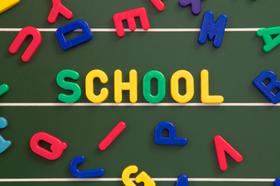Top Rankings
Culpeper County School District ranks among the top 20% of public school district in Virginia for:
Category
Attribute
Diversity
Most diverse schools (Top 1%)
For the 2025 school year, there are 2 public high schools serving 2,774 students in Culpeper County School District. This district's average high testing ranking is 9/10, which is in the top 20% of public high schools in Virginia.
Public High Schools in Culpeper County School District have an average math proficiency score of 90% (versus the Virginia public high school average of 68%), and reading proficiency score of 79% (versus the 81% statewide average).
Public High School in Culpeper County School District have a Graduation Rate of 84%, which is less than the Virginia average of 89%.
The school with highest graduation rate is Culpeper County High School, with 86% graduation rate. Read more about public school graduation rate statistics in Virginia or national school graduation rate statistics.
Minority enrollment is 53% of the student body (majority Hispanic), which is less than the Virginia public high school average of 55% (majority Black and Hispanic).
Overview
This School District
This State (VA)
# Schools
11 Schools
354 Schools
# Students
8,368 Students
411,759 Students
# Teachers
542 Teachers
29,555 Teachers
Student : Teacher Ratio
15:1
15:1
Student By Grade
District Rank
Culpeper County School District, which is ranked within the bottom 50% of all 132 school districts in Virginia (based off of combined math and reading proficiency testing data) for the 2022-2023 school year.
The school district's graduation rate of 84% has decreased from 89% over five school years.
Overall District Rank
#74 out of 132 school districts
(Bottom 50%)
(Bottom 50%)
Math Test Scores (% Proficient)
67%
68%
Reading/Language Arts Test Scores (% Proficient)
(20-21)63%
69%
Science Test Scores (% Proficient)
(20-21)61%
59%
Graduation Rate
84%
89%
Students by Ethnicity:
Diversity Score
0.67
0.71
% American Indian
n/a
n/a
% Asian
1%
8%
% Hispanic
31%
19%
% Black
13%
22%
% White
46%
45%
% Hawaiian
n/a
n/a
% Two or more races
9%
6%
All Ethnic Groups
District Revenue and Spending
The revenue/student of $12,964 in this school district is less than the state median of $15,502. The school district revenue/student has stayed relatively flat over four school years.
The school district's spending/student of $12,151 is less than the state median of $15,257. The school district spending/student has stayed relatively flat over four school years.
Total Revenue
$109 MM
$19,496 MM
Spending
$102 MM
$19,187 MM
Revenue / Student
$12,964
$15,502
Spending / Student
$12,151
$15,257
Best Culpeper County School District Public High Schools (2025)
School
(Math and Reading Proficiency)
(Math and Reading Proficiency)
Location
Grades
Students
Rank: #11.
Eastern View High School
(Math: 90-94% | Reading: 80%)
Rank:
Rank:
9/
Top 20%10
16332 Cyclone Way
Culpeper, VA 22701
(540) 825-0621
Culpeper, VA 22701
(540) 825-0621
Grades: 9-12
| 1,542 students
Rank: #22.
Culpeper County High School
(Math: 85-89% | Reading: 78%)
Rank:
Rank:
9/
Top 20%10
14240 Achievement Drive
Culpeper, VA 22701
(540) 825-8310
Culpeper, VA 22701
(540) 825-8310
Grades: 9-12
| 1,232 students
Recent Articles

The 15 Biggest Failures of the American Public Education System
The world is in a constant state of change and those who fail to adjust fall behind. Unfortunately, the American public education system has not kept up with the times and is currently facing a number of serious problems. Keep reading to learn about the biggest failures affecting the modern U.S. public education system as well as some of the trends that could spark change.

Florida Governor Calls for More Funding for State鈥檚 Public School System
Florida Governor Rick Scott has introduced a state budget for next year that pumps one billion more dollars into the public school system. We鈥檒l look at his reasons for the increase and the responses to the proposal.

Can Your Child鈥檚 School Meet the National Standards?
The article discusses the challenges public schools face in meeting national educational standards. It examines current performance trends, identifies key issues affecting student achievement, and explores potential solutions for improving academic outcomes across U.S. public schools.





